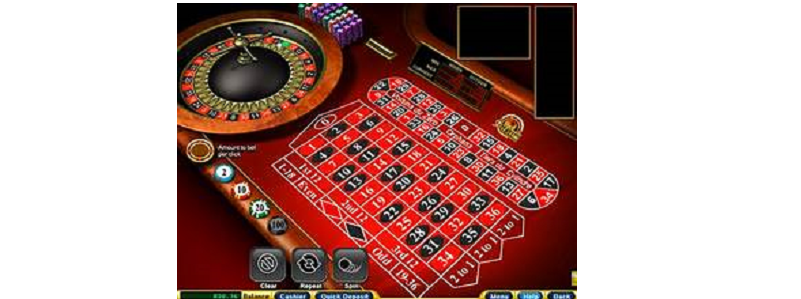Online roulette is one of the most exciting and popular casino games due to its blend of chance and strategy. However, like all forms of gambling, it comes with an inherent balance of risk and reward.
For savvy players, understanding how to manage risk while maximizing potential rewards is key to long-term success. In this guide, we’ll explore how you can balance risk and reward when playing online roulette, helping you make smarter decisions and increase your chances of walking away with winnings.
1. Understanding Roulette Basics: American vs. European Roulette
Before diving into strategies, it’s essential to understand the different versions of roulette and how they affect your chances of winning. The two main types of roulette you’ll encounter online are American roulette and European roulette.
American Roulette
- House Edge: 5.26%
- Wheel Layout: 38 numbers (1-36, 0, and 00)
- Risk Factor: Higher due to the addition of the double zero (00).
European Roulette
- House Edge: 2.70%
- Wheel Layout: 37 numbers (1-36 and 0)
- Risk Factor: Lower compared to American roulette due to the absence of the double zero.
Tip: Always choose European roulette over American roulette when possible, as the single-zero wheel offers a lower house edge, giving you better chances to win.
2. Types of Roulette Bets: Balancing Risk and Reward
Roulette offers a wide variety of betting options, each with its own level of risk and reward. To balance risk and reward, it’s important to understand the different types of bets and how they impact your chances of winning.
Low-Risk Bets (Outside Bets)
Outside bets are placed on larger groups of numbers, offering a higher chance of winning, but with lower payouts.
- Red/Black: Bet on the ball landing on a red or black number.
- Odd/Even: Bet on whether the winning number will be odd or even.
- High/Low (1-18 / 19-36): Bet on whether the number will be in the lower or upper half of the number range.
Payout: 1:1
Risk Level: Low
Reward: Moderate but frequent wins.
Medium-Risk Bets (Column and Dozen Bets)
These bets cover 12 numbers at a time, offering a balance between risk and reward.
- Dozen Bets: Bet on groups of 12 numbers (1-12, 13-24, 25-36).
- Column Bets: Bet on a vertical column of numbers on the table layout.
Payout: 2:1
Risk Level: Medium
Reward: Higher than outside bets but with slightly reduced odds of winning.
High-Risk Bets (Inside Bets)
Inside bets offer higher payouts but come with greater risk, as they cover fewer numbers.
- Straight-Up Bet: Bet on a single number.
- Split Bet: Bet on two adjacent numbers.
- Street Bet: Bet on three numbers in a row.
- Corner Bet: Bet on four numbers in a block.
Payout:
- Straight-Up: 35:1
- Split: 17:1
- Street: 11:1
- Corner: 8:1
Risk Level: High
Reward: Significant, but wins are less frequent.
Tip: If you’re risk-averse, stick to outside and medium-risk bets. If you’re seeking bigger payouts and can handle volatility, inside bets may be worth exploring.
3. Betting Strategies: Reducing Risk While Chasing Rewards
Using a betting strategy to play roulette online can help you manage your bankroll and balance risk while seeking rewards. Here are a few popular strategies that can guide your approach to betting.
Martingale Strategy (High Risk, High Reward)
The Martingale strategy is one of the most well-known betting systems for roulette. The idea is to double your bet after every loss, with the goal of recouping all losses with a single win.
- How It Works: Start with a small bet on an outside bet (such as red/black or odd/even). If you lose, double your bet. Keep doubling after each loss until you win, at which point you return to your original bet.
Pros:
- Recovers losses with a single win.
Cons:
- Requires a large bankroll.
- Risk of hitting the table limit before recovering losses.
Fibonacci Strategy (Lower Risk, Lower Reward)
The Fibonacci strategy is based on the famous Fibonacci sequence (1, 1, 2, 3, 5, 8, etc.), where each number is the sum of the two preceding numbers. This system is slower than Martingale but considered less risky.
- How It Works: Start with the first number in the sequence as your bet. After each loss, move to the next number in the sequence. After a win, move back two numbers in the sequence.
Pros:
- Slower loss progression compared to Martingale.
- Better suited for players with a moderate bankroll.
Cons:
- Requires patience, as big wins are unlikely.
- Does not guarantee a profit.
D’Alembert Strategy (Balanced Risk)
The D’Alembert strategy is a more conservative option where you increase your bet by one unit after each loss and decrease it by one unit after each win.
- How It Works: Start with a small, base bet on an even-money wager. After a loss, increase your bet by one unit; after a win, decrease your bet by one unit.
Pros:
- Reduces the risk of major losses.
- Works well with even-money bets (red/black, odd/even).
Cons:
- Slower recovery after losses.
- Doesn’t work as well with high-risk bets.
Tip: Choose a strategy based on your risk tolerance. The Martingale system is aggressive and high-risk, while the Fibonacci and D’Alembert strategies offer more balance between risk and reward.
4. Managing Your Bankroll: The Key to Balancing Risk and Reward
Effective bankroll management is a crucial element of balancing risk and reward in online roulette. Without it, even the best strategies will fail. Here’s how you can manage your bankroll wisely.
Set a Budget and Stick to It
Before you start playing, determine how much money you’re willing to risk. This amount should be something you’re comfortable losing and should not affect your daily expenses.
- Divide Your Bankroll: Break your total bankroll into smaller units for each session. This prevents you from blowing your entire budget in one go.
- Set Win and Loss Limits: Decide on a win limit (when to stop if you’re winning) and a loss limit (when to stop if you’re losing). Discipline is key to avoiding impulsive decisions.
Adjust Bet Sizes Based on Your Bankroll
Always adjust your bet sizes according to your bankroll. For example, if you have a small bankroll, avoid placing large, high-risk bets, as these can deplete your funds quickly. On the other hand, if you have a large bankroll, you can afford to make riskier bets and aim for higher rewards.
Tip: Use a percentage-based betting system, where you bet only a small percentage of your total bankroll on each spin. This ensures you can play for longer and reduces the likelihood of losing your entire bankroll in one session.
5. Understanding Roulette Odds: Realistic Expectations
Roulette is a game of chance, and while you can use strategies to manage your risk and reward, it’s important to have realistic expectations about your chances of winning.
House Edge
The house edge is the built-in advantage that the casino has over players. In European roulette, the house edge is 2.70%, while in American roulette, it is 5.26%. This means that, in the long run, the casino is expected to win more often than the player.
Probability of Winning
- Red/Black or Odd/Even Bets: ~48.6% in European roulette
- Dozen or Column Bets: ~32.4%
- Straight-Up (Single Number) Bet: 2.7% in European roulette
Tip: Play with the understanding that roulette is a game of probabilities, and while short-term wins are possible, the house edge will prevail in the long term. Balance your expectations accordingly.
Conclusion
Balancing risk and reward in online roulette requires a solid understanding of the game, smart betting strategies, and disciplined bankroll management. By choosing the right version of roulette, making informed bets, and using strategies that align with your risk tolerance, you can enhance your overall experience and improve your chances of success. Remember, while roulette is a game of chance, managing risk effectively is key to maximizing rewards while keeping losses under control.








